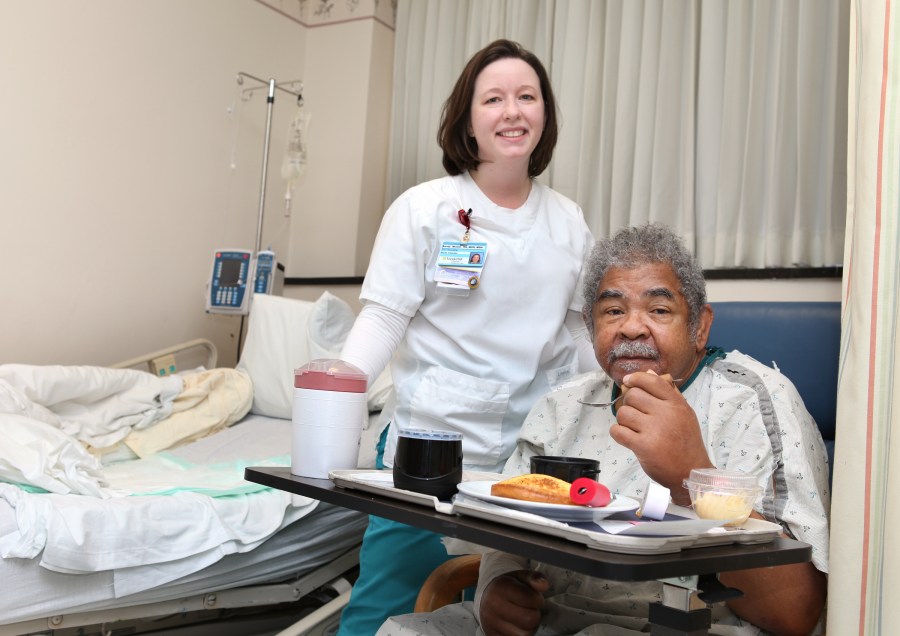
Sandy McGill, MSN, R.N., MBA, helps patient Henry Kincherlow at mealtime in the Acute Care for the Elderly (ACE) Unit. (photo by Susan Urmy)
Nursing unit takes innovative approaches to elder care
Vanderbilt University Medical Center's Acute Care for the Elderly (ACE) Unit is constantly improving patient care and is another example of why VUMC is pursuing a second Magnet designation.
“Elderly people are not just adults who are older, they are a very specialized patient population,” said Sandy McGill, M.S.N., R.N., nurse educator. “Our job is to continually improve the care we provide.”
The ACE Steering Committee, an interdisciplinary team, has completed several initiatives, one of which includes geriatric practice guidelines that support evidence-based care for this special patient population.

The practice guidelines cover a wide range of topics. For example, it's better to give one pill at a time to prevent choking, and studies show that referring to patients as Mr. and Mrs., rather than “sweetie,” decreases the likelihood of depression.
The process of putting together the guidelines made the team take a closer look at their patients' nutrition.
In the United States, 40 percent to 60 percent of hospitalized older adults are malnourished or at risk for malnutrition, which can lead to additional problems such as skin breakdown, poor wound healing, fatigue and increased length of stay.
The ACE Unit began an initiative to do a seemingly simple thing: get their patients out of bed for each meal. Nurses were instructed on how to encourage patients to move from bed to bedside chair to eat breakfast, lunch and dinner.
They provided strict interventions of transferring to a chair or using Smooth Move equipment to get the patient out of bed.
The medical receptionists also play a key role by alerting nurses 30 minutes prior to meal delivery, so they could get the patients moved in time.
Unless the patient was under physician's orders to stay in bed, the nurses coaxed them and physically assisted them to the chair.
“It empowered our nursing staff because they knew this change was going to help them better help their patients,” said McGill.
During the six-month, 270-patient initiative, the team found that patients consumed 20 percent more food if sitting in a chair. More than 70 percent of patients were successfully moved to chairs for meals, compared to the baseline of 14 percent. And, a majority of nurses reported they needed no additional time to move their patients.
“This is important because we have certain matrixes that we follow and we shouldn't ask staff to do something that is overly time-consuming and keeps them from their other job duties,” said McGill.
The ACE team will share results of this initiative at the Second Annual Geriatric Conference at Scarritt Bennett this month and at a national geriatric conference in April.













